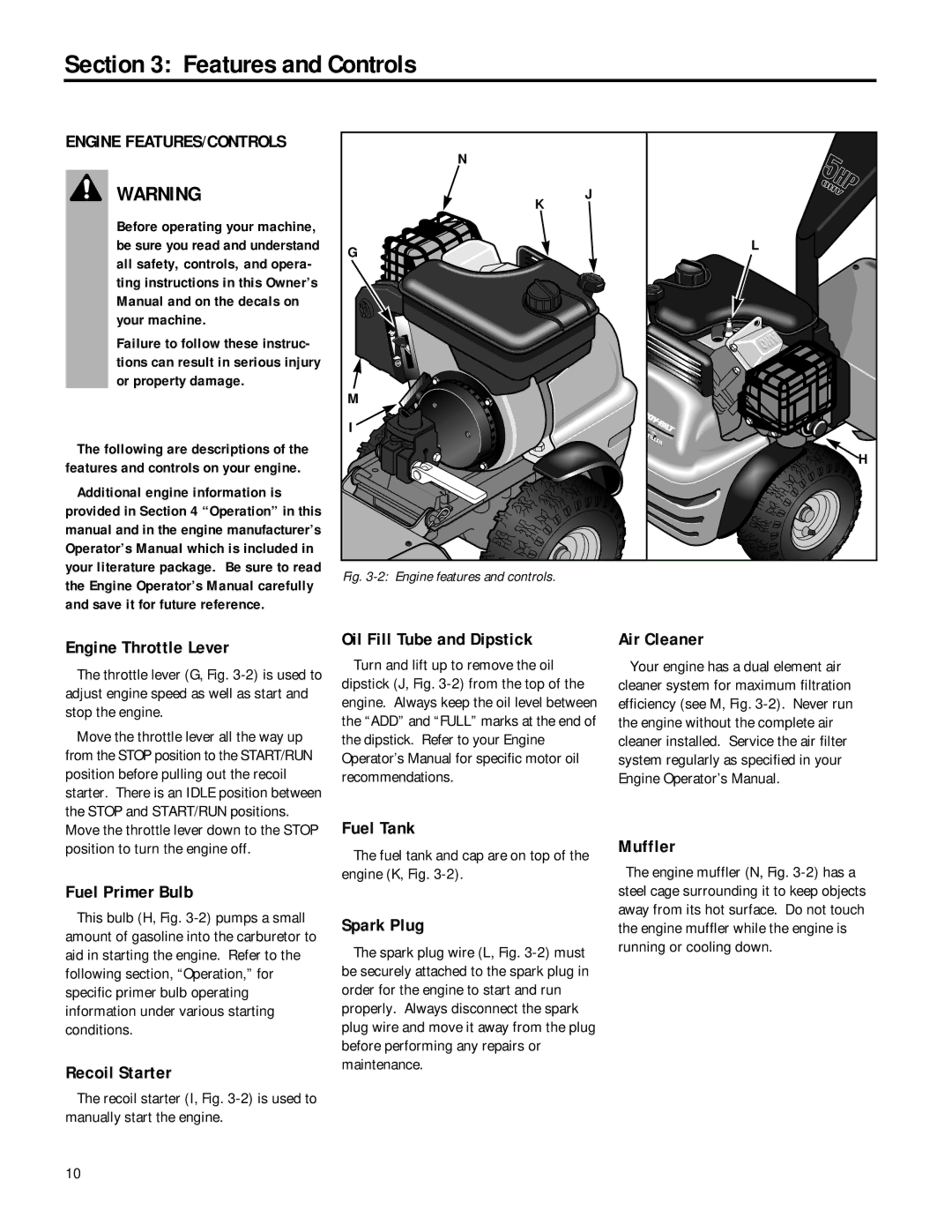
Section 3: Features and Controls
ENGINE FEATURES/CONTROLS
WARNING
Before operating your machine, be sure you read and understand all safety, controls, and opera- ting instructions in this Owner’s Manual and on the decals on your machine.
Failure to follow these instruc- tions can result in serious injury or property damage.
The following are descriptions of the features and controls on your engine.
Additional engine information is provided in Section 4 “Operation” in this manual and in the engine manufacturer’s Operator’s Manual which is included in your literature package. Be sure to read the Engine Operator’s Manual carefully and save it for future reference.
Engine Throttle Lever
| N |
|
| K | J |
|
| |
G |
| L |
|
| |
M |
|
|
I |
|
|
|
| H |
Fig. 3-2: Engine features and controls.
Oil Fill Tube and Dipstick | Air Cleaner |
The throttle lever (G, Fig.
Move the throttle lever all the way up from the STOP position to the START/RUN position before pulling out the recoil starter. There is an IDLE position between the STOP and START/RUN positions.
Turn and lift up to remove the oil dipstick (J, Fig.
Your engine has a dual element air cleaner system for maximum filtration efficiency (see M, Fig.
Move the throttle lever down to the STOP position to turn the engine off.
Fuel Primer Bulb
This bulb (H, Fig.
Recoil Starter
The recoil starter (I, Fig.
Fuel Tank
The fuel tank and cap are on top of the engine (K, Fig.
Spark Plug
The spark plug wire (L, Fig.
Muffler
The engine muffler (N, Fig.
10
